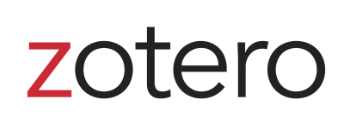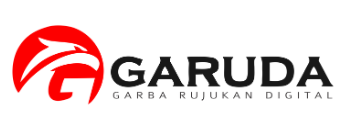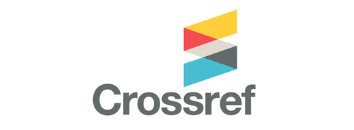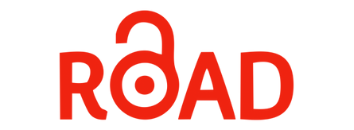EVALUASI DAMPAK LIBERALISASI PERDAGANGAN TERHADAP INDIKATOR PEREKONOMIAN MAKRO INDONESIA : PENDEKATAN MODEL KESEIMBANGAN UMUM TERAPAN
DOI:
https://doi.org/10.24002/kinerja.v7i1.782Abstract
This paper tries to examine the impact of trade liberalization on the Indonesian macroeconomy. The analysis was accomplished by employing the INDORANI Computable General Equilibrium (CGE) model. INDORANI is a CGE model of the Indonesian economy developed by the Inter University Study Center on Economics of the Gadjah Mada University that has had relationship with the IMPACT PROJECT, Monash University, Australia since the early of 1997. The model is static in nature and focuses on the real-side of the economy and explicitly divides Indonesia into two regions, rural and urban.
This study found that trade liberalization in Indonesia would have a positive effect on the Indonesian macroeconomy. We also found that the majority of the simulation long run effects would not be different from the short run effects. Both in the long run and the short run, the trade liberalization would have positive effects on economic growth. In the employment side, the increasing employment in the urban area would be more than in the rural area. From the stability side, the trade liberalization would decrease consumers price index and investment price index.
From the redistribution side, the trade liberalization would increase income of capital and land
owner, but decrease the income of labor. In the sector side, the trade liberalization would increase value added (except for manufactured product which is based on natural resources), export, and employment. Generally, domestic price in nine sectors examined would decrease, except in the mining sector. The import
of rice, another plant, forestry, fishery and husbandry, mining and services sector would decrease, but for the other sectors.
Keywords: trade liberalization, INDORANI Computable General Equilibrium, macroeconomy,
sector
References
Abimanyu, Anggito, Arti D. Adjie, Denni Puspa Purbasari, dan Hengki Purwoto, (1997), Deregulasi
Perdagangan dan Perekonomian Indonesia : Aplikasi Model keseimbangan Umum Terapan Indorani”, dalam Prisma, No.5 Mei-Juni 1997,hal.43-63.
Abimanyu, Anggito dan Arti D. Adjie (1998), “ Current Economic Reform and Its Impact on the Indonesian Economy : Application of INDORANI a Single Country Computable General Equilibrium of the Indonesia Economy “, dalam Kelola, No.18/VII/1998, hal.16-31.
Bevan, D.L., Collier, P dan Gunning J.W (1990), “Controlled Open Economies”, Oxford : Oxford University Press, dalam Handbook of Development Economics, Vol III, Edited by J Behrman dan T.N. Srinivasan, Elsevier Science B.V.,1995
Chenery, H. Lewis., de Melo, J. dan Robinson, S. (1986), “Alternative routes to Development”, Chapter 11, Oxford University Press, dalam Handbook of Development Economics, Vol. III, Edited by J Behrman dan T.N. Srinivasan, Elsevier Science B.V.,1995
Clarette, RL, dan Roumasset,JA. (1990),” The Relative Welfare Cost of Industrialand Agricultural Policy Distortion : A Philippines Illustration”, Oxford University Press, dalam Handbook of Development Economics, Vol. III, Edited by J Behrman dan T.N. Srinivasan, Elsevier Science B.V.,1995
De Melo, J (1988), “Computable General Equilibrium Models for Trade Policy Analysis in Developing Countries : A Survey”, Journal of Policy Modelling, dalam Handbook of Development Economics, Vol. III, Edited by J Behrman dan T.N. Srinivasan, Elsevier Science B.V.,1995
De Melo, J., dan Roland-Holst, DW(1994), “Tariff and Export Subsidies When Domestic Market are Oligopolistic”, University of Michigan Press, dalam Handbook of Development Economics, Vol. III, Edited by J Behrman dan T.N. Srinivasan, Elsevier Science B.V.,1995
Dixon, Peter B. and B.R. Parmenter, (1994), “ Computable General Equilibrium Modelling”, Prelimenery Working Paper No. IP-65 July 1994, Centre of Policy Studies and the Impact Project, Monash University, Australia.
Doroodian, Khosrow, Roy G. Boyd, dan Matloob Piracha, ( 1998 ), “ A CGE Analysis of the Impact of Trade Liberalization Between the US. And Mexico “, dalam American Economics Journal, October 1998, hal 43-54.
Erwidodo, (1997), “Implikasi dan Dampak Putaran Uruguay pada Sektor Pertanian di Indonesia “, dalam Agro Ekonomika, No. 2/Th.XXVII/1997, hal.25-47.
Feridhanusetyawan, Tubagus dan Yose Rizal, (1998),”Liberalisasi Perdagangan Dunia: bagaimana Manfaatnya Bagi ASEAN?”, dalam Analisis CSIS, Th.XXVII/1998, No.3, hal. 258-278.
Hulu, Edison, (1995), “ Topologi Model Komputasi Keseimbangan Umum”, dalam Ekonomi dan Keuangan Indonesia, No.1 (XLIII)1995, hal.55-95.
Krugman, Paul R. and Obstfeld, (1994) ,Ekonomi Internasional : Teori dan Kebijakan, Edisi kedua, diterjemahkan oleh Faisal H. Basri, PAU FE – UAJY-UI, PT Raja Grafindo Persada, Jakarta.
Meier, Gerald M.,(1995), Leading Issues in Economic Development, (Sixth Edition ), Oxford University Press, New York.
Nota Keuangan dan RAPBN, tahun Anggaran 1999/2000 PAU Studi Ekonomi UGM, (1998), Dokumentasi INDORANI 9571, Yogyakarta ( tidak dipublikasikan ).
Ratnawati, Anny, (1996), “ Kebijakan Penurunan Tarif Impor dan Pajak Ekspor, Kinerja Perekonomian, Sektor Pertanian dan Distribusi Pendapatan di Indonesia”, Ringkasan Disertasi, Program Pascasarjana IPB, Bogor. (tidak dipublikasikan )
Sri Handoko, Budiono dan Anggito Abimanyu, (1997), “ INDORANI: A Single Country Computable General Equilibrium of the Indonesian economy”, Paper, A One Day Seminar Macroeconomic Modelling in Developing Country, Cooperation The IESR Faculty of Economics University of Indonesia with Erasmus Huis University and Japan International Cooperation Agency, Jakarta.
Tambunan, Tulus T.H., ( 1996 ), Perekonomian Indonesia, Ghalia Indonesia, Jakarta.
World Bank, (1997) ,World Development Report 1997, Washington DC.














